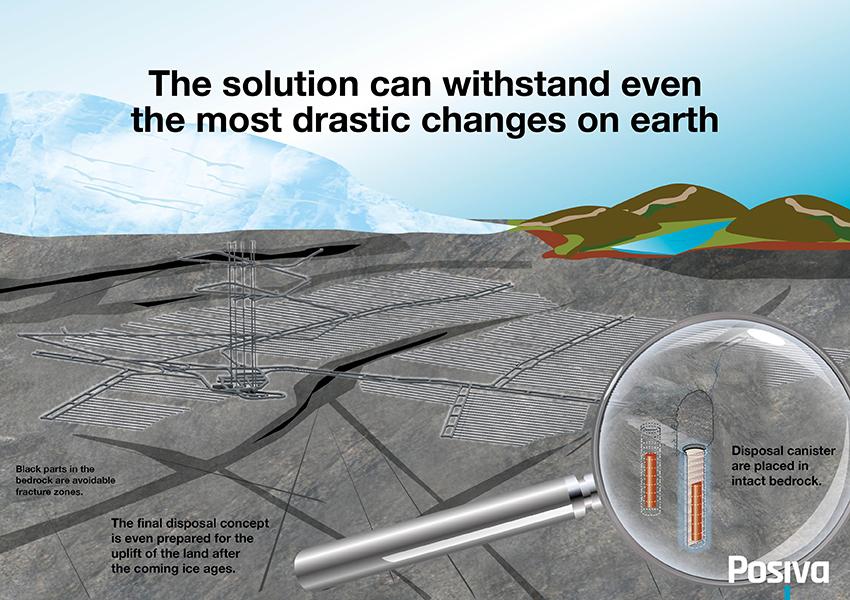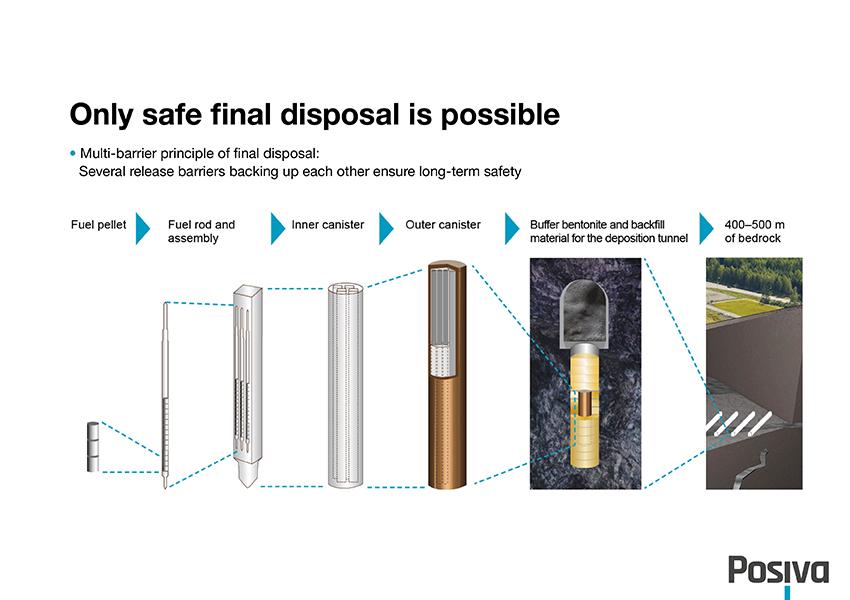Long-term safety
Safety is a prerequisite for final disposal. The key to the final disposal of spent fuel is the long-term safety of the solution, which is assessed and demonstrated with a safety case.
According to the international definition, safety case refers to all technological and scientific materials, analyses, observations, trials, tests and other proof used to justify the reliability of the assessments made of the long-term safety of final disposal. At Posiva, this means demonstrating the functionality of the geological disposal solution studied and tested for more than four decades in the conditions of the Olkiluoto bedrock, as well as demonstrating the generation of radiation doses to the environment in the event of failure of one or more engineered release barriers and release of radioactive substances from the repository to the living environment.
In addition to nuclear and radiation safety criteria, estimates of various changes occurring in nature are used as a design basis for the long-term safety of geological final disposal. For example, the safety case analyses how well the final disposal solution can withstand earthquakes, future glaciations up to a million years, and the stress caused by continental ice.

The safety case also addresses uncertainties related to the behaviour of the disposal solution and to the assessment of various possible events and developments. The risk assessment takes into account the likelihood of events.
Constructing repositories in bedrock that is about 1,800 million years old requires the management of safety-critical functions to ensure that the intact zones of the rock remain suitable for final disposal. Posiva must also ensure that after the final disposal ends, the host rock conditions remain favourable and return to the natural state.
The safety of the final disposal of spent fuel will be assessed during and after the operation of the final disposal facility. The long-term safety review period has been divided into different periods, from about 100 years of operation, to the next thousands or hundreds of thousands of years up to a million years.
Although it is never possible to comprehensively review and evaluate all possible scenarios, the safety case demonstrates that, even if assessed conservatively, the final disposal of spent fuel does not cause harm to humans or the environment.
Long-term safety is based on the multi-barrier principle
Long-term safety is based on the multi-barrier principleOpen link in a new tab. Radioactive materials are contained in a number of mutually supportive release barriers that are as independent as possible, so that failure of one release barrier does not jeopardise the functioning of the isolation.
In the final disposal solution, the spent fuel is packed in watertight, durable copper canisters. The canisters are deposited at a depth of about 430 metres in a rock where they are separated from humans and where they remain tight without care as long as their contents could cause significant harm to the natural environment.

Main features of long-term safety in STUK Guide
The main features of long-term safety are described in detail in the Radiation and Nuclear Safety Authority Guide YVL D.5 Disposal of nuclear wasteOpen link in a new tab, which states that “the ingress of substances detrimental to long-term safety into the emplacement rooms shall be limited as much as practically possible, and their concentration within the emplacement rooms shall be monitored.”
During the foreseeable period, the upper limit of the annual radiation dose for the person most exposed in final disposal is set at 0.1 millisieverts (mSv), while the average effective radiation dose for Finns is 5.9 millisieverts (mSv).